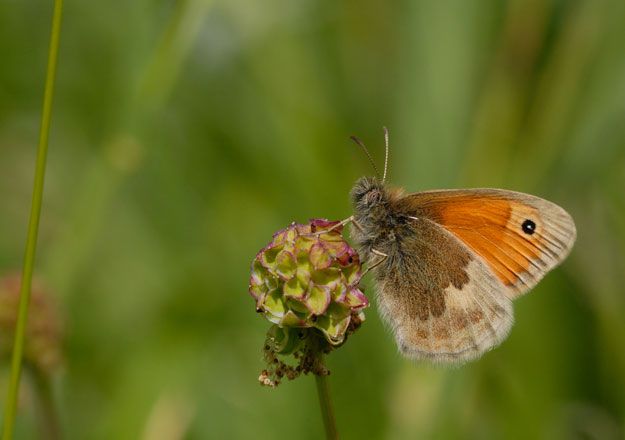- info@sirhowyhillwoodlands.co.uk
- Thomas Ellis Way, Tredegar NP22 4QF
- About Us
- Get involved
- Visit Us
Visit Tredegar & our Woodlands
Come and visit us!
Sirhowy Hill Woodland
Thomas Ellis Way
Tredegar
Blaenau Gwent
NP22 4QF - Wildlife
- Woodland Shop
Latest and greatest products, direct from our
Woodland Shop
Sourced from the Woodlands and the local community.
You have
item(s) in your bag
- Home
- /
- Blog
- /
- Animals & Wildlife
- /
- Butterflies
- /
- Small Heath

Scientific name: Coenonympha pamphilus
Small Heath
Small, yellow-orange, flies close to the ground. Perches with its wings closed.
The Small Heath is an inconspicuous butterfly that flies only in sunshine and rarely settles more than a metre above the ground. Its wings are always kept closed when at rest. Underside of forewing has eyespot at tip. Hindwing banded with brown, grey and cream. The number of broods and the flight periods are variable and adults may be seen continuously from late April to September on some sites in southern England.
This relatively widespread butterfly can occupy a range of habitat types and, although its range has changed little, many colonies have disappeared in recent decades. Widespread in Britain and Ireland.
What does the Small Heath eat?
The Small Heath eats fine grasses, especially fescues (Festuca spp.), meadow-grasses (Poa spp.), and bents (Agrostis spp.).
What habitat does the Small Heath live in?
The Small Heath lives on grassland where there are fine grasses, especially in dry, well-drained situations where the sward is short and sparse. Typical habitats include; heathland, downland and coastal dunes, but it is also found on road verges, moorland and in woodland rides.
What family does the Small Heath belong to?
The Small Heath belong to the Browns family.

Click to view more
Statistics
Scientific Name
Coenonympha pamphilus
Location
England, Wales, Scotland and Ireland
Size
Small sized
Wingspan Range: 34-38mm
Population
Found throughout Britain and Ireland. Distribution Trend Since 1970’s = -29%

Other Wildlife







